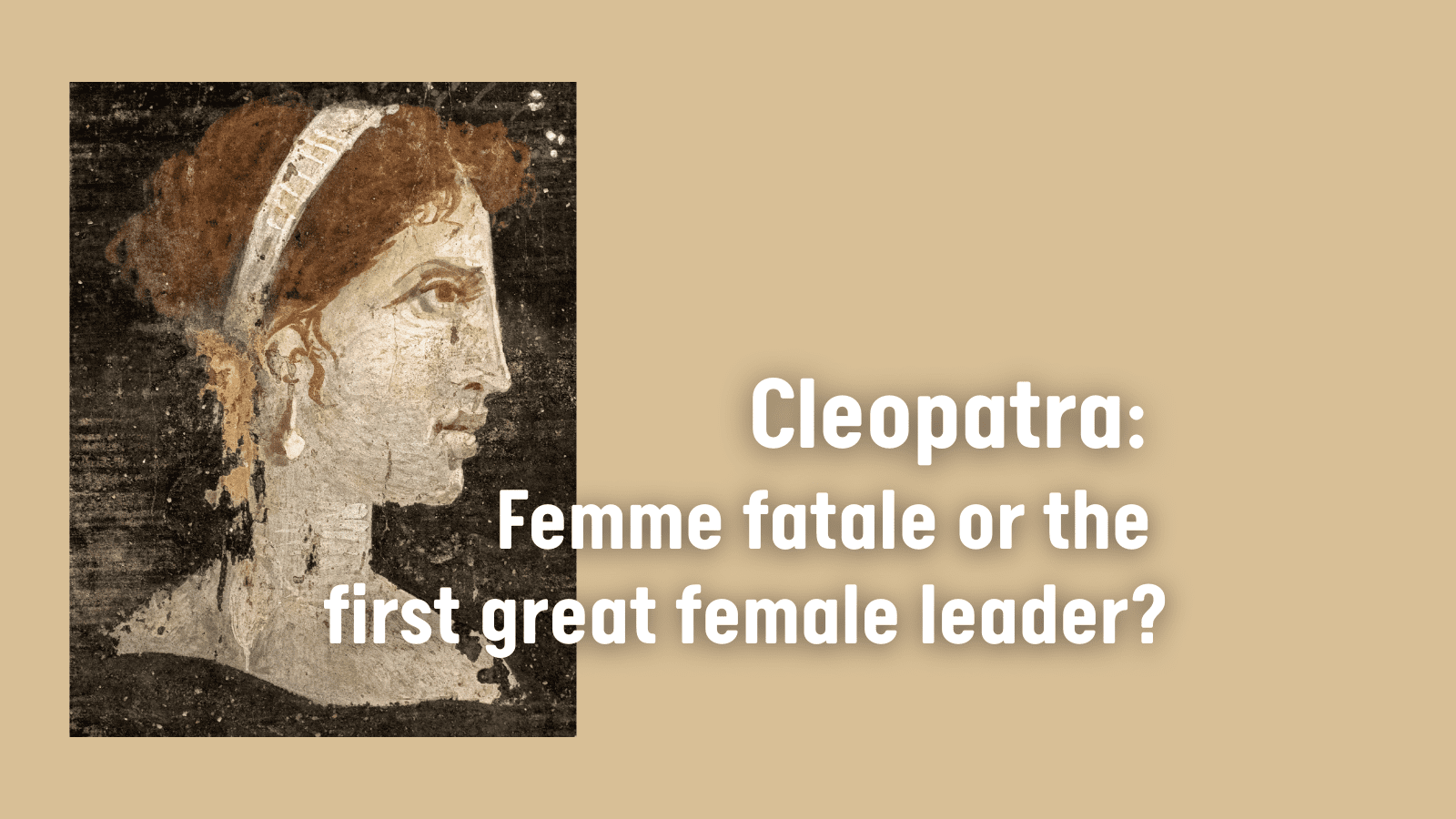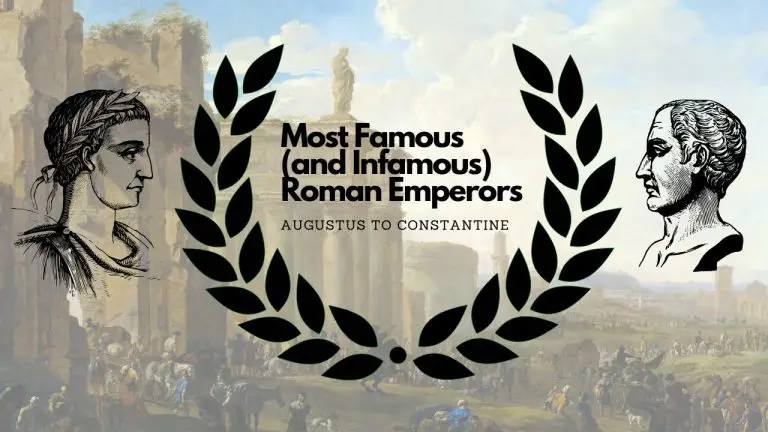Cleopatra: Femme fatale or the first great female leader? (10 Facts)
Cleopatra became Pharoah of Egypt when she was just 18.
Quite a feat for any teenager, but she was not even ethnically Egyptian, but rather Macedonian and Ptolemaic with Ancient Greek heritage!
There is much presumption and assumption around this very accomplished woman of Ancient Egypt, so let’s sift through the sands of an interesting time to get to the nitty-gritty.
She was the last ruler of the Ptolemaic dynasty
After Alexander the Great died in 323BCE, Egypt fell under the rulership of the Macedonian/Greek Ptolemies. Two centuries sifted through the hourglass under their rule until a power shift saw Rome become the guardian of the Ptolemaic dynasty. Tributes paid to the Romans kept them at bay, seeing to it that Egypt did not fall wholly under the control of Rome.
Cleopatra was the last active ruler of the Ptolemaic Kingdom, reigning between 51 and 30 BC. After her death, her son ruled for only a few days before Rome took over the rule of the country. Octavia (Augustus) made Egypt a province only days after Cleopatra committed suicide, rendering her the last effectively ruling pharaoh.
We refer to her as Cleopatra, but she was actually Cleopatra VII
Cleopatra’s full title was Cleopatra VII Thea Philopator. It is undocumented how she came to be Cleopatra VII. She may have been the daughter of Cleopatra V, but this cannot be adequately substantiated with proof.
Education
As a home language speaking Koine Greek, she was remarkably fluent also in several languages, among them Egyptian, Ethiopian, Hebrew, Arabic, Median, Parthian, and Latin. She was in fact the only Pharaoh of the Ptolemaic dynasty to know how to communicate in the Egyptian language which made her all the more effective as the leader of the nation. Her fluency in the language meant that she could liaise with her armies without the need for interpreters. Her intelligence was broadly based, being that she was also well-versed in mathematics, philosophy, and debate.
Cleopatra’s Incestuous Marriages
It was typical for members of the royal houses to marry within the family, and it was no different within the Ptolemaic dynasty. It is said that Cleopatra was born as a result of the union of siblings. Intermarriage secured the purity of the bloodline. So it was that Cleopatra tied the knot with both of her adolescent brothers at different times during her reign, who then served as both her ceremonial spouse and co-regent.
Femme Fatale or Roman propaganda?
The Roman Octavian did not like Cleopatra. He painted her as a seductress, temptress, and all-round dangerous woman. Picking up on Octavian’s lead, Roman history has her remembered as a harlot who used her womanly sexuality to enchant powerful men in order to come by power.
Human or Goddess?
Cleopatra was not above portraying herself as the goddess Isis at ceremonial events, more than mindful of the association of image and power. She used her intelligence and charm for people to realise her goals for Egypt politically. She was popular among her people and openly revelled in luxury. Cleopatra was charismatic and intelligent, and she used both qualities to advance the country politically. She was not above having family members eliminated if they proved to be obstacles to her goals, a trait which earned her the reputation as being somewhat ruthless.
She was a strong and successful leader
It was through her beguiling diplomacy and proficient public speaking that Egypt was kept from falling to the Roman Empire. Historically, Cleopatra was indubitably the first female sovereign to rule solo for over a decade.
Roman Lovers
Romance notwithstanding, Julius Caesar and Mark Antony were love interests as well as military alliances. Point of fact being that Cleopatra was exiled by her brother at the time of meeting the Roman general Caesar, famously falling out of a rolled-up carpet before him. She orchestrated this unusual presentation, so popular lore persists, appearing in all her finery, to beg Caesar to help her to reclaim her throne. It was Caesar who took on the role of mediator for the warring brother and sister.
Cleopatra was inarguably very much in love with Mark Antony, who without a doubt returned the feelings. Mark Antony was a firm rival of Octavian, and by aligning herself with him, she kept Egypt free from the clutches of the Roman Empire.
The story of her being rolled in a carpet to meet Caesar was probably a myth
If Plutarch’s version of the events is to be believed, this is how Caesar and Cleopatra met. Pothinus banished his sister Cleopatra from Egypt. So it was that she had to scheme a way into her usurped Egyptian castle inside of a rolled-up carpet, under the pretence of it being a gift for Caesar. She was thus carried by her servant Apollodoros into the palace via a secret passageway to Caesar’s quarters. Once in Caesar’s presence, Apollodoros unrolled the carpet and Cleopatra was revealed. With no choice but to be impressed by her beauty and aptitude, he reinstated Cleopatra as the sole ruler of Egypt.
Whether Plutarch’s account was for the sole purpose of entertainment remains a mystery. Written as it is in Plutarch’s interpretation lends the story credence and it is widely believed to be fact.
Truth or not, Cleopatra did without a doubt have the ancient temple Caesareum of Alexandria erected in Alexandria in honour of Julius Caesar, her first known lover. It was as yet unfinished when the Roman Emperor Augustus defeated Mark Antony and Cleopatra in Egypt. Augustus completed its construction and dedicated the temple to his own cult, destroying any trace of Antony in Alexandria.
She escaped the death of Caesar
Caesar was violently assassinated in Rome in 44 BC where he and Cleopatra were living together as lovers. Caesar and Cleopatra had a son together, and mother and son fled for their lives after the assassination across the river Tiber. No sooner had she returned to Egypt than she had her brother Ptolemy XIV poisoned with aconite and her son Ptolemy XV ‘Caesarion’ put on the throne in his stead.
She had four children – none of whom ruled after her death
Cleopatra’s son with Julius Caesar, Caesarion, meaning little Caesar, was killed by order of the Roman emperor Augustus following Cleopatra’s suicide. Her three children with Mark Antony, Ptolemy ‘Philadelphus’ and twins Cleopatra ‘Selene’ and Alexander ‘Helios’, survived but never lived to inherit Egypt.
Her suicide is still surrounded in mystery
No one really knows how Cleopatra met her end, although it is famously known that she and her beloved Antony took their own lives. In 30 BCE, Octavian’s Roman forces had followed the two to Alexandria where Antony, so the story has it, saw his end by stabbing himself in the stomach.
The legend behind Cleopatra’s suicide has her succumbing to the deadly bite on the arm from an “asp”, probably an Egyptian cobra or viper. Plutarch’s take however is that Cleopatra took the deadly poison she was known to always have hidden in her hair comb. Some schools of thought surmise from these suppositions that her suicide was carried out using a pin dipped in potent toxin, perhaps snake venom.
Cleopatra’s Needle
Cleopatra’s Needle is in fact three ancient Egyptian obelisks. The three are to be found singularly in New York City, London, and Paris. It is improbable that any one of the three was built in honour of Cleopatra, and no two have their origin in the same Egyptian site. In fact, Cleopatra’s needle is just about 3,500 years old and was made in Egypt in 1460 BC for Pharaoh Thutmose III.






